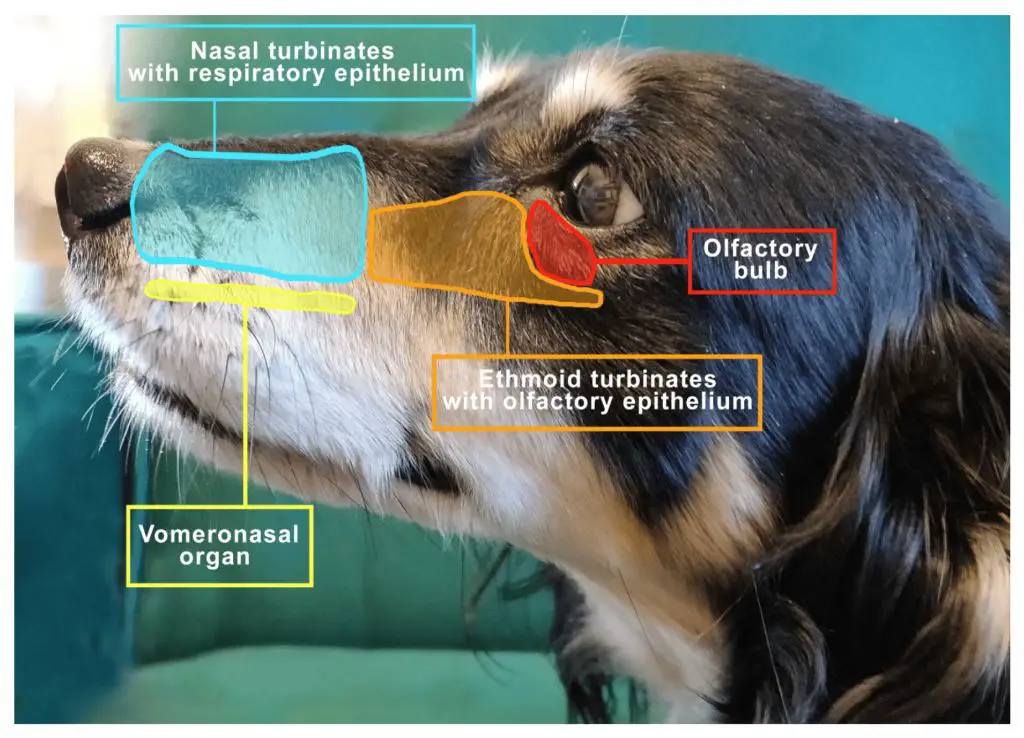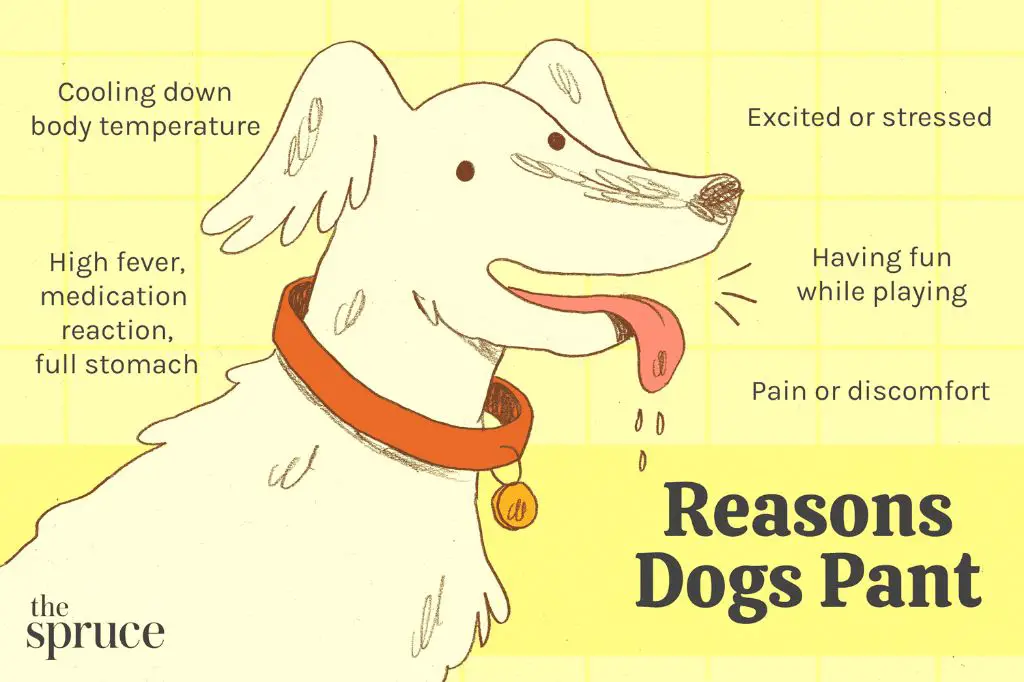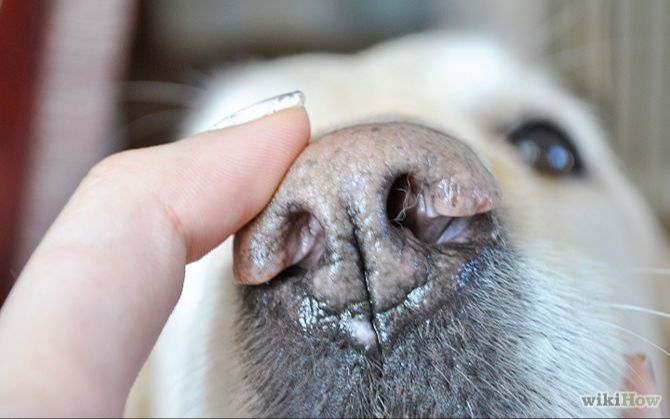Why Is My Dog’s Nose Cold and Dry?
If you’re a dog owner, you’ve likely noticed your pup’s chilly nose pressed against your leg on more than one occasion. While it may seem like an odd quirk, there’s actually a fascinating reason behind your dog’s cold yet dry nose.
Your dog’s nose contains a complex network of blood vessels and moisture glands that work together to help them effectively smell their surroundings and regulate body temperature. The inherent design of the canine nose allows dogs to have chilly nostrils without being wet. In this article, we’ll explore the anatomy behind your dog’s unique nose and what their dry nose means about their health.
Anatomy of a Dog’s Nose
A dog’s nose contains a complex network of structures that allow it to detect scents and regulate temperature. At the entrance are the nostrils, which lead to the nasal cavity inside the snout. The nasal cavity contains structures called nasal turbinates, which consist of scroll-like bones covered in a mucous membrane. The turbinates increase the surface area inside the nose to allow for better odor detection. The dog also has a special sniffing mechanism that allows air to flow quickly over the turbinates when inhaling, exposing odor molecules to the olfactory receptors. Meanwhile, the airways connect the nasal cavity to the lungs for respiration.

Inside the nasal cavity is the olfactory epithelium, which contains millions of olfactory receptor cells. These bind with odor molecules and send signals to the brain to identify the smell. Dogs have up to 300 million olfactory receptors compared to only 6 million in humans, contributing to their excellent sense of smell.
Temperature Regulation
Dogs primarily regulate their body temperature through panting. As air passes over the moist surfaces in a dog’s mouth and nose, evaporation helps cool the blood before it circulates back through the body. A dog’s wet nose also helps amplify heat loss.

When panting, dogs rely on the rich blood supply in their noses to cool the blood. The capillary beds in the hairless part of a dog’s nose are right under the surface, providing plenty of access to the outside air. As blood flows through these capillaries, the cool external air helps reduce the blood’s temperature before cycling it back to the rest of the body. This is why dogs pant with their mouths open – it allows more air to reach the nasal passages and maximize this cooling effect.
That’s why a healthy dog almost always has a cool, wet nose – it’s a key part of their temperature regulation system. The moisture enhances evaporative cooling, while the lack of fur allows air to reach the nasal capillaries and lower blood temperature. A dry nose could be a sign that the dog is overheated or having issues regulating their body temperature properly.
Blood Circulation
A dog’s nose contains an extensive network of blood vessels and arteries that helps regulate temperature. There is a dense network of blood vessels called the arterial mesh located right under the surface of the nose. This allows for rapid heating and cooling of the blood as it circulates through the nose.
The blood vessels in the nose facilitate vascular heat exchange. As blood flows into the nose, the blood vessels constrict to retain heat. When the dog is hot, the blood vessels dilate to release heat through the surface of the nose. This allows the blood to either warm up or cool down before circulating to the rest of the body, helping regulate the dog’s overall body temperature.
Moisture Control
A dog’s nose contains mucus membranes that help keep it moist. The mucus traps moisture and prevents the nose from drying out. However, the moisture on a dog’s nose can also evaporate. Factors like temperature, humidity, and air flow will impact how quickly moisture evaporates. In hot, dry environments, a dog’s nose will lose moisture faster. The evaporation process has a cooling effect that helps regulate body temperature.

The mucus membranes continually produce more mucus to replace what’s lost through evaporation. That’s why a dog’s nose stays moist but doesn’t get dripping wet. The moisture also lubricates the nose and helps enhance their sense of smell. But the evaporation is carefully balanced to avoid over-drying the sensitive nasal tissues.
Environmental Factors
The temperature and humidity of the environment can impact your dog’s nose temperature and moisture levels. In hot, dry conditions, your dog’s nose may feel warmer and drier as their body works to conserve moisture. The nasal passages have less moisture to evaporate and cool the nose surface. Conversely, in cold, humid conditions like rain or snow, your dog’s nose may feel cooler but retain more surface moisture since less moisture evaporates.
Wind can also dry out your dog’s nose, especially cold dry winds in winter. The wind whisks away the thin layer of moisture on the surface of the nose through forced evaporation. Less moisture means less evaporative cooling power, allowing the nose to warm up.
So in summary, hot and dry conditions lead to a warmer, drier nose while cold and humid conditions result in a cooler, wetter nose. Wind dries the nose. Understanding how the environment impacts your dog’s nose can help you monitor their health and comfort.
Breed Differences
Different dog breeds have varying nose shapes and structures that impact the temperature and moisture of their noses. Dogs that evolved in cold climates tend to have longer noses that help warm and humidify air before it reaches their lungs. These dogs, like Siberian huskies and Alaskan malamutes, often have cold noses to avoid overheating.
Short-nosed breeds like pugs and bulldogs have compressed nasal passages and struggle to effectively regulate temperature and moisture. As a result, they are prone to having drier noses. Their shortened muzzles also limit airflow and these dogs often have trouble breathing.
Sporting and hound breeds prized for their sense of smell tend to have large, well-developed noses that stay cold and moist to support scenting abilities. For example, bloodhounds have wet noses that help trap and dissolve scent particles.
Herding breeds like border collies fall in the middle with moderately-sized noses. These noses are often cool but not excessively wet or dry.
In general, a dog’s nose structure aligns with their original breed purpose. Temperature and moisture needs vary, but a healthy nose suits each breed’s natural abilities and climate.
Health Indicator
A dog’s nose can provide important clues about their health and wellbeing. Changes in the temperature or moisture of your dog’s nose may indicate an illness or condition that requires veterinary attention.

For example, a warm, dry nose can be a sign of fever, while a cold, wet nose is normal. Excessive dryness or crusting of the nose may signal dehydration. Nasal discharge can point to respiratory infections. Loss of pigment on the nose may indicate immune or hormone abnormalities.
It’s important to monitor your dog’s nose on a regular basis to establish their normal baseline. That way, you can more easily notice when something seems off. Contact your veterinarian if you observe any concerning or persistent changes in the appearance, temperature, or moisture level of your dog’s nose.
With attentive care and rapid treatment, many conditions associated with nasal changes can be managed. So keep an eye on that cute canine nose, as it can provide vital health insights.
Caring for Your Dog’s Nose
A dog’s nose is a sensitive part of their body, so it’s important to keep it clean and healthy. Here are some tips for caring for your dog’s nose:
Regularly wipe your dog’s nose with a warm, damp cloth to remove dirt and debris. Be gentle, as the nose is sensitive. Avoid harsh cleaners or scrubbing.
Apply a thin layer of pet-safe nose balm or moisturizer if your dog’s nose seems dry or cracked. This helps protect and soothe the sensitive skin.
Avoid prolonged sun exposure, which can cause sunburn on the nose. Use pet-safe sunscreen on sunny days.
Make sure your dog has access to clean water to stay hydrated. Dehydration can lead to dry nasal passages.
Don’t allow your dog to stick their nose into harmful substances, which could lead to irritation or even chemical burns.
Schedule regular vet checkups to monitor your dog’s nasal health and address any potential issues early.
With proper care and moisture, you can keep your dog’s nose in great shape for years to come.
Conclusion
In conclusion, a dog’s cold nose is a vital part of its anatomy and serves several important functions. A dog’s nose temperature is lower than its body temperature in order to facilitate temperature regulation. The moist nose also allows dogs to effectively process scents. While a cold, moist nose is normal in most dogs, extremely dry or warm noses can indicate potential health issues. Overall, a dog’s cold nose is a carefully evolved trait that aids dogs in their daily lives. Understanding the purpose and function of your dog’s nose allows you to monitor its health and ensure your dog’s long-term wellbeing.